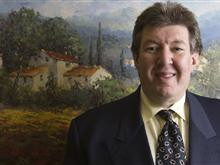As of this moment, the S&P/TSX Composite index is down 384.58 point or -3.27% year to date. The S&P 500 is down 67.32 or -6.04% year to date. That is your market update. When the global economic outlook appears uncertain and on the brink of another recession, equity markets reflect this reality in terms of greater than normal volatility. In markets like these, what we should be looking for are non-correlated assets and managers that have demonstrated the expertise to preserve capital during uncertain times like today. In addition, one should also be focusing their efforts on receiving some form of income while the economic climate sorts itself. The following 4 ideas should hopefully accomplish both those goals. While we cant speak to the best/worst time to buy/sell particular securities, as that depends on one’s personal circumstances, the approach we usually take, especially with closed end funds, is to purchase them when they are trading at the steeper than normal discount to their Net Asset Value (NAV). Having said that, we currently do not have positions in any of these securities but will be looking to scale in when the prices seem right to us, which on a directional basis is lower. The only other thing we would like to add is that you should do you own due diligence.
——————————————————————————————————————————
Trident Performance Corp.
——————————————————————————————————————————
This closed end fund is managed by CI Investments. Its investment objective is to provide tax-efficient risk-adjusted long term rates of return by obtaining exposure to a Global Macroeconomic Portfolio, advised by Trident Investment Management. Co-Founded in 1998, by Nandu Narayanan, Trident Investment Management seeks to exploit macroeconomic trends to generate attractive risk-adjusted rates of return with low or negative correlation to traditional ‘long’ investments. This is exactly what Mr. Narayanan did during the financial crisis, when the CI Global Opportunities Fund recorded positive performance of 109% in 2007 and 42.6% in 2008. Since inception in March 1995, the fund has averaged 19.69% as of the end of May 31, 2010. It should be noted that the Global Macroeconomic Portfolio may consist of equity and fixed income securities, commodities, currencies and derivative instruments. The fund does not expect to pay regular dividends or make other regular distributions. Distributions, if any, (which includes dividends and other forms of distributions) on shares are expected to consist primarily of returns of capital and capital gains dividends. While the CI Global Opportunities is closed to new investors, fret not, since one can now gain exposure to the fund through Trident Performance Corp. Given Mr. Narayanan’s performance in 2007 and 2008, I’d say he certainly lives up to his objective of attractive risk-adjusted rates of return with low or negative correlation to global equity markets. Trident Performance Corp. trades under the ticker TCP on the TSX.
The only drawback with this fund, as far as we can tell, is that the Net Asset Value (NAV) is not readily available. We have just been updated by a reader (thank you, David!) that the NAV of Trident Performance Corp. is available and that it is updated twice a month. This certainly makes it easier to determine whether the fund is trading at a premium or discount to its NAV.
PS. It’s well worth checking out Mr. Narayanan’s monthly commentary, as he outlines and encapsulates the global macro environment into a coherent investment thesis.
——————————————————————————————————————————
OCP Credit Strategy
——————————————————————————————————————————
Stuart Kovensky is a Managing Member, Co-Chief Investment Officer and Director of Onex Credit Partners
The Onex Credit Partners (OCP) Credit Strategy fund seeks to provide investors with exposure to senior debt obligations of non-investment grade North American issuers. The OCP team consists of eleven professionals and is led by Michael J. Gelblat and Stuart R. Kovensky. Gelblat & Kovensky have been co-portfolio managers of a long/short, event-driven opportunistic credit strategy that focuses on actively traded senior debt investments in the non-investment grade debt markets (also known as the Debt Opportunity Strategy) since 2001. The OCP team managed approximately US$900 million through several senior debt strategies, including more than US$220 million in the Debt Opportunity Strategy. The strategy of the OCP Credit Strategy fund will be substantially the same as the Debt Opportunity Strategy. Managers Michael J. Gelblat and Stuart R. Kovensky each have in excess of twenty years of experience in the senior credit markets. Onex and Onex principals have invested approximately US$65 million in the Debt Opportunity Strategy. In terms of investment strategy, Gelblat & Kovensky look for investments that demonstrate high levels of asset and/or cash flow coverage, attractive total return potential through a combination of current income and/or capital appreciation and a have a catalyst that will trigger an increase in the price of the investment.
Michael Gelblat is a Managing Member, Co-Chief Investment Officer and Director of Onex Credit Partners
While the portfolio will not employ the use of leverage, it will use short exposure to manage risk in the Portfolio and to generate returns. In addition, the managers will typically hedge the portfolio to protect against the risk of losses from currency fluctuations. It is intended that the majority (and not less than 90%) of Portfolio investments denominated in foreign currencies will be hedged to the Canadian dollar. Finally, given the credit based nature of the fund, unitholders will receive quarterly, tax-advantaged distributions, initially targeted to be $0.70 per annum, representing an annual yield of 7% based on the original issue price of $10.00 per Unit. These distributions will consist primarily of returns of capital for tax purposes. OCP Credit Strategy trades under the ticker OCS.UN on the TSX.
Monthly updates from the fund manager and NAV figures are available on the fund’s website.
——————————————————————————————————————————
Horizons AlphaPro North American Value ETF
——————————————————————————————————————————
The Horizons AlphaPro North American Value ETF is an open-ended exchange traded mutual fund. Under the management of veteran fund manager, Vito Maida of Patient Capital, the investment objective of the HAP Value ETF is to seek long term capital appreciation and income by investing in equity and equity related securities of issuers located in North America. The HAP Value ETF will invest primarily in issuers located in the United States of America. Maida, who has previously held portfolio management positions at Trimark Financial Corp., Hamblin Watsa Investment Counsel and the Ontario Municipal Employee Retirement System (OMERS), bases his investment philosophy on long-term absolute value. Maida founded Patient Capital in 2000 and has never had a down year. In fact, as of March 31, 2010 he has compounded investors’ money at an annualized rate of 8.42% since inception. So how does Maida do it? He constructs portfolios strictly on a bottom up basis. He analyzes historical annual reports to determine balance sheet strength, sustainability of cash flows and profitability. A very important component of the analytical process is an assessment of the company’s accounting policies and a considerable amount of time is spent in attempting to estimate “intrinsic value” through the use of discounted cash flow models and traditional valuation measures such as price/earnings ratios and price/book ratios. The HAP Value ETF will seek to hedge its U.S. currency exposure at all times and may from time to time use derivatives to hedge its exposure to equity securities. Maida doesn’t stray from his investment strategy and is content to shore up large amounts of cash if he cannot locate an investment worth making. In this regard, the HAP Value ETF may, from time to time, hold up to 25% of its net assets in cash, cash equivalents and/or fixed income securities. Being an active ETF, management fees are higher than those of a passive ETF and stand at 0.70% with an additional performance fee of 20% kicking in when the ETF beats its benchmark, the S&P 500 Index. We think these fees are reasonable considering Mr. Maida’s track record of capital preservaion and outperformance over extended periods of time. The Horizons AlphaPro North American Value ETF trades under the ticker HAV on the TSX.
Monthly commentary by Maida, the fund’s top 10 equity holdings and cash weighting can be found on the fund sponsor’s website.
——————————————————————————————————————————
Timbercreek Mortgage Investment Corporation
——————————————————————————————————————————
We’ve written about Mortgage Investment Corporation’s (MIC) before but Timbercreek Mortgage Investment Corporation (TMIC) has been the only publicly traded MIC we have been able to locate in the Canadian equity space. With approximately $1.1 billion in assets through its five active funds , Timbercreek is a specialized investment manager focused on real estate and other alternative asset classes. Timbercreek Asset Management Inc. believes that successful long-term investing in an alternative asset class is about identifying and buying assets in inefficient markets. Consequently, in Timbercreek’s opinion, the Canadian transitional mortgage lending industry is an example of an inefficient market where supply does not meet demand and where there is opportunity to source and acquire quality mortgage loans at prices that generate yields that are greater than the risk would ordinarily demand. In short, the TMIC is a publicly traded investment fund that provides customized loans to qualified real estate investors. Real estate investors typically use short-term loans to bridge a period of one to three years where they require temporary capital for property repairs, redevelopment of a property, or for the purchase of another investment. These short-term loans are typically repaid with longer-term debt obtained from Canadian financial institutions once the applicable transitional period is over or the restructuring is complete.The investment objective of the Fund is, with a primary focus on capital preservation, to acquire and maintain a diversified portfolio of mortgage assets that generates attractive, stable returns in order to permit the Fund to pay monthly distributions to its Shareholders. The mortage loans that the fund invests in are directly secured by residential (including multi residential), office, retail and industrial real property across Canada, primarily located in larger urban markets and their surrounding areas, which are typically more liquid and provide more predictable security. The fund primarily is focused on investing in mortgages that are secured by income-producing assets where interest on the loan can be serviced from cash flows generated by the underlying assets. The Fund Manager targets an aggregate annualized yield (net of all fees and expenses of the Fund) equal to the two-year Government of Canada bond yield plus 550 basis points. Since inception in July 2008, the fund has exceeded this targeted yield. It should be noted that in the prospectus, the fund manager did indicate the intention to raise additional capital for the purpose of investing in additional mortgage assets as they believe that the optimal size of the portfolio should be approximately $250,000,000[Net Asset Value of the Fund (as at June 15/10) was $109,620,164], based upon market fundamentals such as aggregate size of the customized lending market, its targeted average loan size and analysis of expected competition. With regards to fees, Timbercreek charges 1.2% per annum of the gross assets of the Fund and there is an additional performance fee of 20% carried interest over the aforementioned hurdle rate. For tax purposes, TMIC qualifies as a MIC and is thus able to operate as a flow-through entity so that a shareholder of a MIC is put in a similar position from an income tax perspective as if the investments made by the MIC had been made directly by the shareholder. The Timbercreek Mortgage Investment Corporation trades under the ticker TMC on the TSX.
With the seemingly unquenchable thirst for income these days, our spotlight on Mortgage Investment Corporation’s (MIC) was intended to highlight an investment and source of income that may not have been on the radars of investors. Our quibble however with private Mortgage Investment Corporation’s (MIC) is that we are unable to methodically gauge the manager’s investment process and track record. That hurdle is removed in the case of a publicly traded MIC such as Timbercreek Mortgage Investment Corporation (TMIC). Timbercreek has a strictly defined investment process that is implemented by a team of mortgage professionals focused on loan origination/underwriting, asset management, loan servicing and research and analysis. After the rigorous vetting of the investment opportunity by the debt management team, the opportunity then requires unanimous approval from the Mortgage Advisory Committee. Once funded, Timbercreek actively manages every loan and this means communicating regularly with borrowers to understand their repayment strategies. We would also like to add that Timbercreek Investment Management was co-founded by Tye Bousada, founding partner and Co-CEO of EdgePoint Investment Group. Prior to founding EdgePoint, Tye was Vice-President and hihgly regarded Portfolio Manager at Invesco Trimark. The Net Redemtion Value and a summary of the investment portfolio of the Timbercreek Mortgage Investment Corporation is published on the fund’s website.












{ 2 comments… read them below or add one }
TCP NAV value is here … not daily, but it is updated twice a month
http://fund.ci.com/gishome/plsql/cif.show_close...
TCP NAV value is here … not daily, but it is updated twice a monthnhttp://fund.ci.com/gishome/plsql/cif.show_closed_end_rep?pi_universe=CI_ALT_INVEST_CLOSEDnn
{ 1 trackback }